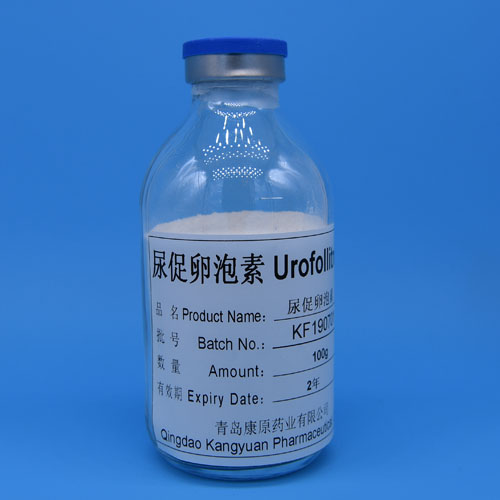In the field of pharmaceuticals, the manufacture of Ulinastatin and the
usage instructions for Urofollitropin play vital roles. This article provides an
overview of these two important components in the medical industry.
Ulinastatin Manufacture: Ulinastatin, also known as urinary trypsin
inhibitor (UTI), is a protease inhibitor widely used in the treatment of various
inflammatory conditions. The manufacturing process of Ulinastatin involves
several key steps:

a. Sourcing of Raw Materials: The first step is to procure high-quality raw
materials required for the production of Ulinastatin. This includes sourcing
enzymes, buffer solutions, and other necessary substances.
b. Fermentation: The production of Ulinastatin involves fermentation, where
specific strains of microorganisms are cultivated in a controlled environment.
These microorganisms produce the required enzymes through fermentation.
c. Purification: Once fermentation is complete, the Ulinastatin is
separated and purified from the fermentation broth using various techniques such
as filtration, chromatography, and centrifugation. This ensures the removal of
impurities and the isolation of pure Ulinastatin.
d. Formulation and Packaging: After purification, the Ulinastatin is
formulated into the desired dosage forms, such as lyophilized powder or
injectable solutions. The final product is then packaged and labeled for
distribution.
Urofollitropin Instructions: Urofollitropin, a follicle-stimulating hormone
(FSH), is used in fertility treatments to stimulate the development of multiple
follicles in the ovaries. Proper administration and adherence to the
instructions are crucial for the effective and safe use of Urofollitropin. Here
are some key instructions for using Urofollitropin:
a. Dosage and Administration: Urofollitropin is typically administered by
subcutaneous injection. The dosage and injection frequency are determined by the
prescribing healthcare professional based on individual patient needs. It is
important to follow the prescribed dosage and injection technique
accurately.
b. Storage and Handling: Urofollitropin should be stored in a cool and dry
place, away from direct sunlight and moisture. Proper handling procedures should
be followed to maintain the integrity and efficacy of the medication.
c. Monitoring and Consultation: During the treatment with Urofollitropin,
regular monitoring is essential. This may include blood tests, ultrasound scans,
and hormone level assessments. Patients should closely follow up with their
healthcare provider and report any concerns or side effects experienced during
the treatment.
Conclusion: Ulinastatin manufacture and Urofollitropin instructions are
crucial aspects of the pharmaceutical industry. The careful manufacturing
process of Ulinastatin ensures the production of a high-quality and effective
protease inhibitor. On the other hand, adhering to the instructions for
Urofollitropin usage is vital for its safe and successful use in fertility
treatments. Understanding the manufacturing process and following the
instructions accurately contribute to the overall effectiveness and positive
outcomes of these pharmaceutical components.